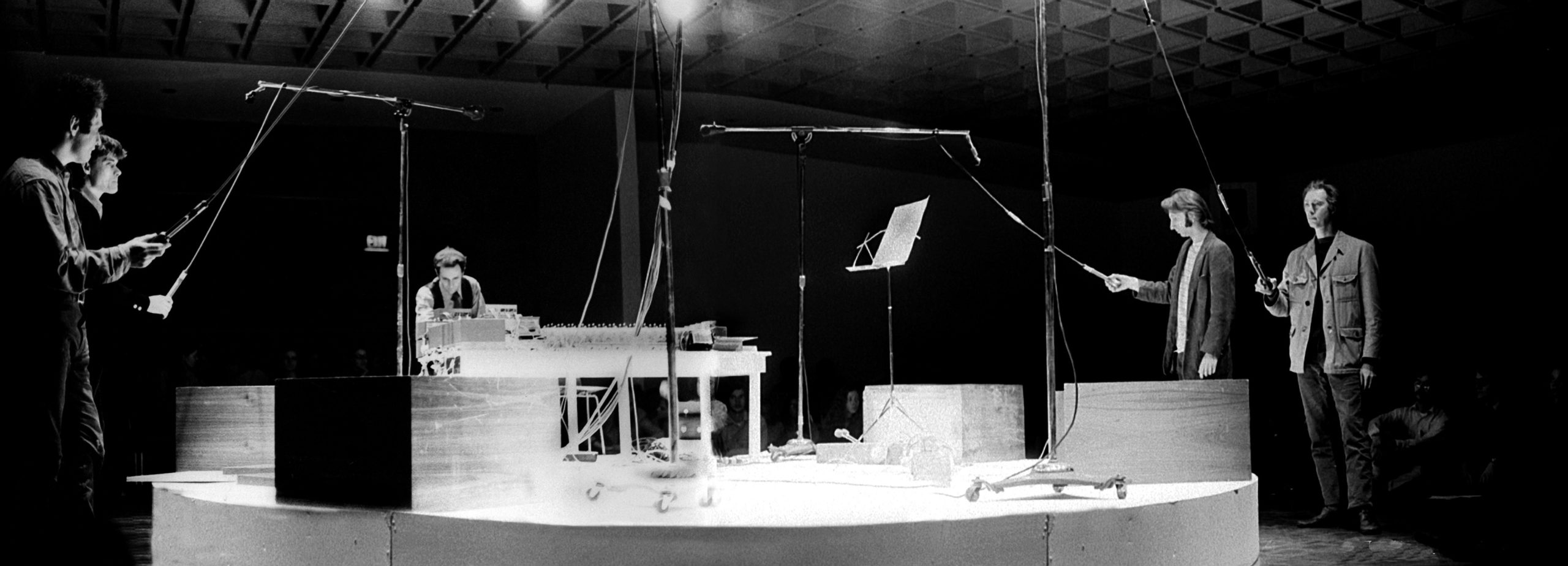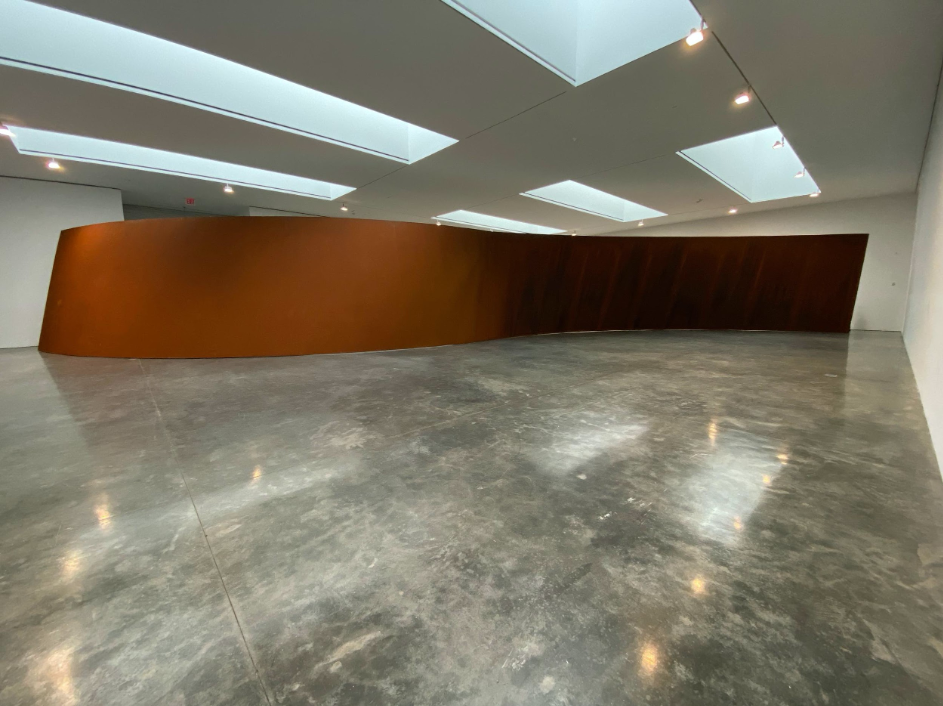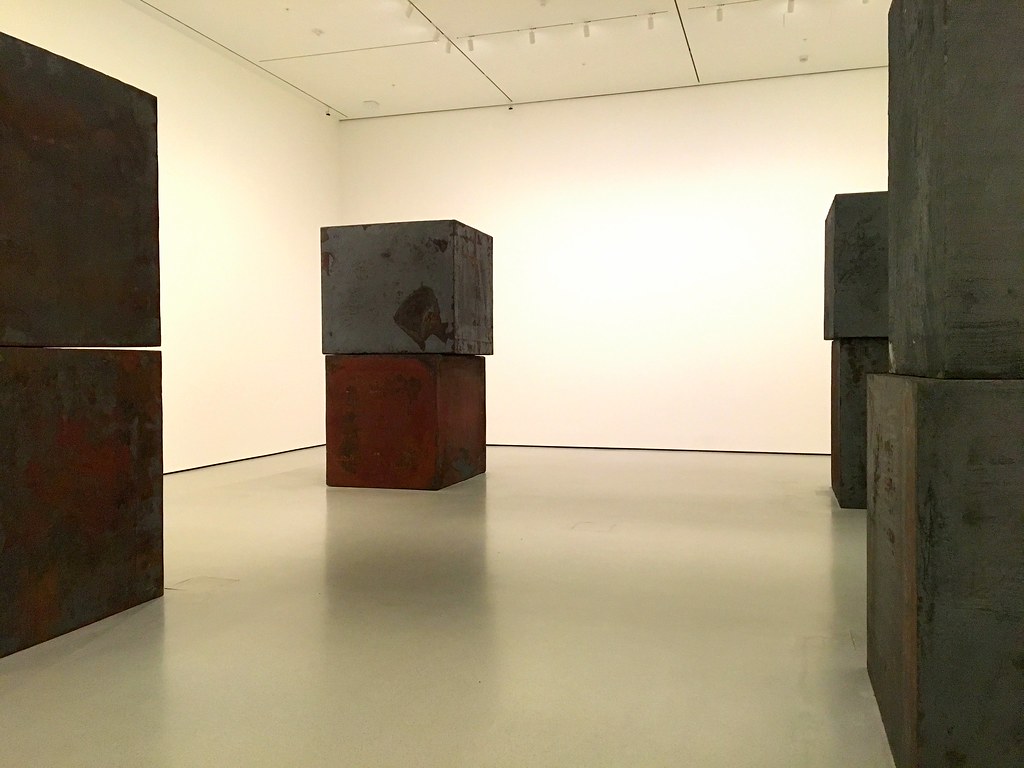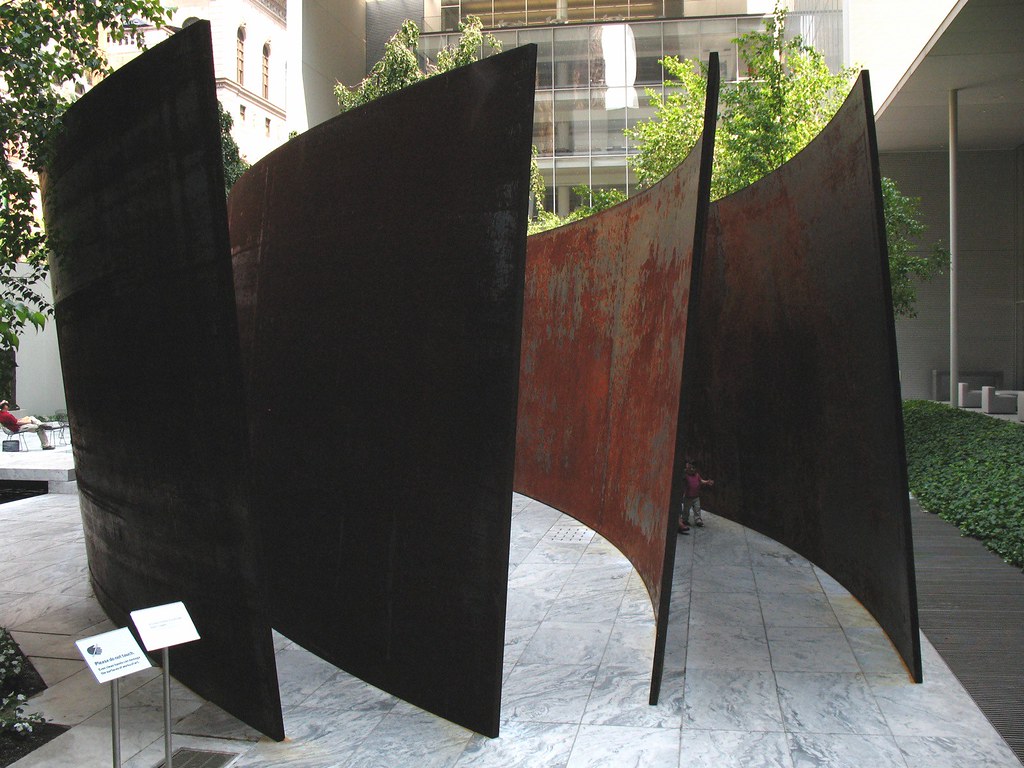
Opinion | Richard Serra, Steve Reich: A Journey Through Minimalism
While the year is still new, in the art world, we can already see transitional marks between 2019 to 2020 through the revival of Minimalism, particularly the attention given to the artist Richard Serra. In what he describes as his “heaviest” show, Serra’s exhibition features the monumental work Reverse Curve. This solo show, which opened in September 2019 and lasted until early February 2020, explores the search for value in what surrounds us.
Minimalism is an art movement that emerged in the 1960s in the United States as a radical branch of abstract art marked by its focus on the essence of art, rather than outside material reality. In this way, Minimalism emphasizes a pure aesthetic, a beauty conveyed only by the intrinsic value of a work, experienced through its material, aural, visual, and structural qualities. Minimalism is a subversive movement, previously rejected and sharply criticized for only being comprehensible to members of radical movements in an era dominated by Abstract Expressionism and Surrealism. It has now come to be perceived more conceptually, which has helped to dissuade apprehensions and inform a better understanding of the self in the modern world.
The 1960s were a decade of unprecedented artistic experimentation, notably marked by the emergence of Happening performances and conceptual art. This decade signalled a turning point in which art as a practice was questioned. The spectator was emancipated and became a necessary participant to the existence of the work. Both minimalism, and Abstract Expressionism from which it emerged, developed during an era of extreme violence and unprecedented socio-economic change. The development of nuclear weapons, the Vietnam war, and rapid technological progress forever altered the perception of the self and the world we live in. Abstract Expressionism, characterized by abstract imagery that is charged with emotion and personal meaning, sought to express violence with violence. Minimalism, on the other hand, aimed to produce impersonal works comprehensible to all.
Minimalism, and art in general, have often been linked with Humanism, a “rational philosophy informed by science, inspired by art, and motivated by compassion” that “affirms the dignity of each human being”. For Humanists, art has the power to affirm and represent the nature of man as a form of introspection. The humanistic dimension of Minimalism lies in its freedom of interpretation, and contemplation. Minimalism invites us to meditate, to consider objects and the nature of what surrounds us and what we are in relation to them.

Today, Serra has been rediscovered as a key figure in Minimalism due, in part, to the rise in appreciation for meditation and self-reflection. In many modern cultures within the West, consumerist societies tend to forget the real value of what is produced: as a world of artifice where experiences are designed, manufactured, and packaged with convenience, our society works as “a true empire of things.” Our need to find meaning in consumption is one of today’s challenges. However, what both Humanism and Minimalism strive to remind us is that we have the capacity, as both citizen and consumer, to give value to the products we use. This very notion is what fascinates Minimalists. As we lose sight of what our society should value, Minimalist artwork allows us to experience value in its essence, honest and absolute—rather than searching for meaning through layers of artistic veneers. Richard Serra has notably discussed this in relation to the challenges surrounding the perception of real value, noting, in reference to the Reverse Curve, that ‘weight is a value for me’.
A Humanistic Friendship
To understand the revival of Minimalism, we must go back to the beginning, and delve into Serra’s friendship with American composer Steve Reich, both of whom are often described as the fathers of Minimalism in their respective fields of visual art and music.
The shared history of the two artists began in 1969 at the Whitney Museum, when Reich presented his “audible sculpture”, titled Pendulum Music for which Serra was one of the performers. Pendulum Music was a musical installation for microphones that swing, like a pendulum, over loudspeakers. The exhibition involved a living sculpture where both the spectators and the performers could be active participants, demonstrating the essence of Minimalism as a shared experience.
At its inception, Pendulum Music was enshrined as the beginning of an artistic and musical experimentation into a new genre. It was proof that the friendship between Reich and Serra was forged in a profoundly humanist form of art, evolving in the face of its environment. Both Reich and Serra see art as a means of addressing our collective and personal history through beauty. Listening to a symphony by Reich, or perceiving a sculpture by Richard Serra evokes that which is both unique to the individual, and shared by all. Both have created timeless works of art that can be experienced and understood from the 1960s to the present day, thereby uniting the present viewer with the past in a profound reflection on the human condition. As seen from their art, the strength of Reich and Serra’s friendship is rooted in their shared ambition — the celebration of the existence of human perception and imagination. As Serra describes: “I’ve always felt that Steve had an ethical grounding, which in his early work translated into social and political philosophy and responsibility, whereas in the later work the emphasis is on the historical and the spiritual”.

Minimalism, too, has withstood the test of time, as it addresses both universal questions about the human being throughout the cultural and social issues of each era. To its disciples and devotees, it has helped humans understand and connect with each other through times of both gradual and drastic change, and has generated an ethos that endures today.
The Art to Phase Reality
Many have argued that one of the greatest challenges for Western societies today is to know how to evaluate and appreciate beauty. In a model of mass production, Minimalism creates the necessary space to guide us towards quality, instead of quantity. It is this quantity of layers, contrasts, shapes, colours, dear to the abstract expressionism, that Minimalism seeks to criticise and question. The quality of the artwork lies in its very nature — its essence — not in its symbolic meaning nor its expressive qualities. Minimalism does not create beauty but rather seeks to find it, using techniques such as ‘phasing’ which was first used by Reich in 1965 with his piece It’s Gonna Rain. ‘Phasing’ involves selecting a musical motif by choosing notes that convey particular emotions. The symbolic meaning of the phasing process lies in its capacity to find beauty in a specific form. Through phasing, Reich is playing with our ability to contemplate a work in relation to ourselves. It has become a central dimension of Minimalism because it challenges one’s capacity to perceive and learn from what is seen without feeling the need to extract an interpretation or message, and instead accepting something in its non-obtrusive natural state.
A Spiritual Search for the Truth
Minimalist artworks, such as those of Serra and Reich, are connected by a will for truth —truth of material, sounds, emotions and senses. In my opinion, two of their works were particularly demonstrative of this search for true form of beauty: the first, Serra’s Intersection II, a sculpture created in 1992 and the second, City life, Reich’s inter-contemporary ensemble composed in 1995. These two works illustrate the capacity for Minimalism, whether it be in music or sculpture, to create a unique experience of showcasing beauty through the essence of an artwork. The first impressions of these two works are primordial, in that they almost appear to be echoing each other.

Both works provide us with an intense and unique experience — a radical departure from the typical work of art. In echoing and complementing each other, the lines of Intersection II and the melody of City Life epitomize the ambition of Minimalism, a marriage of intensity and simple truth. What makes Minimalism unique is that it is representative of nothing but itself: one faces the art as an object, movement, or sound in its own essence, allowing the audience to see, hear, and feel through direct experience of the object itself, without being translated through a medium, and without an imbued meaning. As pointed out by Frank Stella, “What you see is what you see”.

As a philosophical quest or agent of creation, Minimalism is a particularly important modality of knowledge for mankind: it represents the moment when humans affirm, thanks to art, their capacity to feel and to exist in relation to what surrounds them. Humanism and truth are therefore the two major pillars of the Minimalist quest.
For Reich and Serra, Minimalism seeks to teach us about ourselves. I believe that Minimalism draws our attention to the reality of our environment. By exploring the truth of the material and by discovering art as it really appears to us, we can better know ourselves and be attentive to the distilled essence of things as well as our essence as human beings. In a world where many often feel overwhelmed by what they create, a look at a Minimalist work can teach us about our own nature. Experiencing a sculpture by Richard Serra or a piece by Steve Reich is remembering that one is human.
Featured Image: From left: Richard Serra, James Tenney, Steve Reich, Bruce Nauman, and Michael Snow performing Pendulum Music (May 27, 1969), Music by Richard Landry.
Edited by Chanel MacDiarmid
